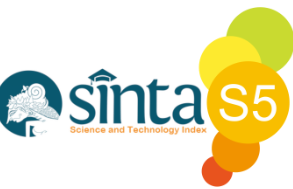Abstract
Culinary reflects the knowledge, social, economy and culture of the community. Food (food) can be a representation of individual culture and social community. The purpose of this study is to study and describe the picture of the interaction of culinary symbolism in the community of Palembang. The theory used in this study is the theory of symbolic interaction. This study uses a qualitative method with a phenomenological approach. The results of this study describe mpek-mpek culinary is a part that is closely related to consumption activities and social interaction of the people of Palembang. Mpek-mpek is a habitus that is carried out for generations starting from how to choose materials, process, cook, serve and eat it. Through food (food), the students respond to the symbols of life value, the value of work, the value of space or time, the value of relations with nature and the value of relationships with others.
Bahasa Abstract
Kuliner meresepsentasikan pengetahuan, sosial, ekonomi dan budaya masyarakat. Kuliner (makanan) dapay menjadi representasi dari budaya individu dan sosial masyarakat. Tujuan kajian ini untuk mengkaji dan mendeskripsikan gambaran tentang interaksi simbolisme kuliner mpek-mpek dalam sebuah komunitas masyarakat Palembang. Teori yang digunakan dalam penelitian ini adalah teori interaksi simbolik. Penelitian ini menggunakan metode kualitatif dengan pendekatan fenomenologi. Hasil penelitian ini mendeskripsikan kuliner mpek-mpek merupakan bagian yang erat kaitannya dengan kegiatan konsumsi dan interaksi sosial masyarakat Palembang. Mpek-mpek merupakan habitus yang dilakukan secara turun temurun mulai dari cara memilih bahan, mengolah, memasak, menyajikan dan menyantapnya. Melalui kuliner (makanan) mpek-mpek merespentasikan simbol-simbol nilai hidup, nilai karya, nilai ruang atau waktu, nilai relasi dengan alam dan nilai relasi dengan sesama.
Recommended Citation
Misnawati, Desy
(2019)
"KAJIAN SIMBOLISME KULINER MPEK MPEK DALAM INTERAKSI SOSIAL MASYARAKAT PALEMBANG,"
Jurnal Vokasi Indonesia: Vol. 7:
No.
1, Article 8.
DOI: 10.7454/jvi.v7i1.138
Available at:
https://scholarhub.ui.ac.id/jvi/vol7/iss1/8








